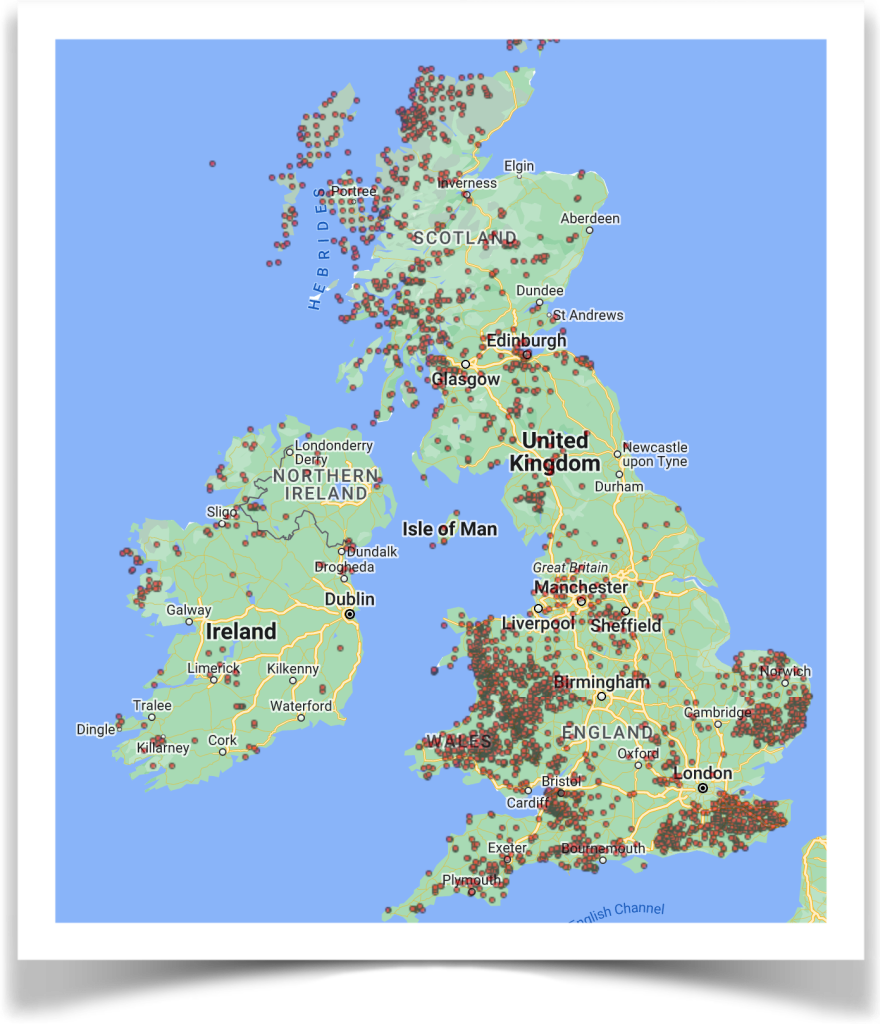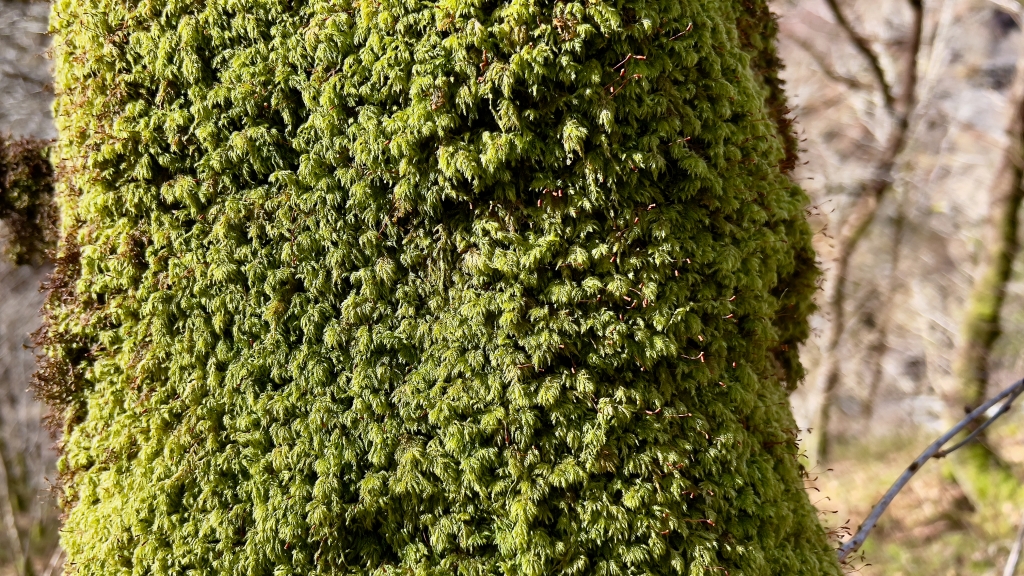There are many phyla that are beyond my amateur ID skills, and mosses are towards the top of that list. There are times though when I do have a go with some of the more striking species. During a recent walk around the lush temperate rainforest of Cwm Rheidol I noticed that many of the trunks of deciduous trees were covered by a rich and luxurious green carpet. Closer examination revealed a thick growing moss with narrow leaves tapering to a sharp point. It is this growth pattern that gives rise to the common name of Slender Mouse-tail moss due to its slender, tapering stems that resemble the tail of a mouse.

The genus name “Isothecium” is derived from the Greek words “isos”, meaning equal, and “thēkion”, meaning small case or receptacle, referring to the equal size of the capsules (the spore-containing structures) in this moss genus. The species epithet “myosuroides” is derived from the Greek word “mys”, meaning mouse, and “oura”, meaning tail, referring to the appearance of the sporophyte (the stalked spore-containing structure) which has a curved shape that resembles the tail of a mouse.
Typical of all bryophytes the life cycle of Isothecium myosuroides is characterised by alternation of generations, the gametophyte phase and the sporophyte phase. The gametophyte phase is the dominant phase in the life cycle, and it is this is part of the life cycle that we are all aware of, in essence the moss that we see growing on walls, trees and wherever they occur. The gametophyte is composed of a leafy stem with rhizoids that anchor the plant to the substrate. The leaves of Isothecium myosuroides are arranged spirally around the stem, and each leaf has a single nerve running through the centre. The gametophyte phase of I. myosuroides can last for several years. The gametophyte is a haploid plant that produces gametes through mitosis.
The sporophyte phase of Isothecium myosuroides is initiated when the male and female gametes fuse to form a diploid zygote. The zygote develops into a sporophyte, which is a stalked capsule that contains spores. The capsule is very visible at certain times of the year, and can be seen in the photos. It is borne on a long stalk called the seta, which arises from the gametophyte. The capsule of I. myosuroides is urn-shaped, with a lid called the operculum that falls off when the spores are mature. The spores are dispersed by the wind and can germinate to form new gametophytes.
Isothecium myosuroides is a pleurocarpous moss, which means that it grows in a mat-like form, spreading horizontally along the substrate on which it is growing. Or in this case vertically up the tree trunk. When Isothecium myosuroides first colonises a new area, it typically begins as a small patch of moss, either from spores or fragments of the plant that have broken off from a nearby colony. As the colony grows, new branches will begin to emerge from the main stem of the plant, creating a more complex and branching structure. Over time, the stems of the plant will continue to elongate, allowing it to spread further across the substrate. The stems can range in length from a few millimetres to several centimetres.

Along the base of the stems, small hair-like structures called rhizoids develop as the moss develops. These rhizoids help anchor the plant to the substrate and absorb nutrients and water from the surrounding environment. As the plant continues to grow and reproduce, it will eventually form a dense mat-like structure on the substrate, which can be several centimetres thick. This mat can provide important habitat and microclimate conditions for a variety of other organisms, including other mosses, lichens, and invertebrates.
There are several organisms that are known to interact with Isothecium myosuroides. Several species of liverworts, including Cephaloziella divaricata and Greater Whipwort – Bazzania trilobata, have been documented as growing in association with Isothecium myosuroides. These liverworts attach themselves to the stems of the moss and extract nutrients from the host plant.
There are several invertebrates that are known to feed on Isothecium myosuroides. Here are a few examples and I’ve covered a few examples below. Various species of mites have been documented feeding on Isothecium myosuroides, including Oribatida and Prostigmata. Mites are typically small, measuring only a few millimetres in length, and feed by piercing the cell walls of the moss and sucking out the contents. Springtails small, wingless insects that are found in soil and leaf litter have also been recorded feeding on Isothecium myosuroides, including Entomobrya multifasciata and Ceratophysella sigillata. Springtails feed by scraping the surface of the moss and consuming the resulting debris. And we can’t forget caterpillars, although not a common food source. The caterpillar of the moth species Clepsis spectrana has been documented feeding on the leaves of the moss.

There isn’t much of a tradition of using Isothecium myosuroides as a herbal remedy. One of the traditional uses has been as an anti-inflammatory agent. It has been used topically to treat wounds and skin conditions such as eczema and psoriasis. Another traditional use of I. myosuroides is as a diuretic. It has been used to increase urine production and treat urinary tract infections. However, I have to emphasise there is no scientific evidence to support this use either, and I don’t recommend you trying.


Leave a comment